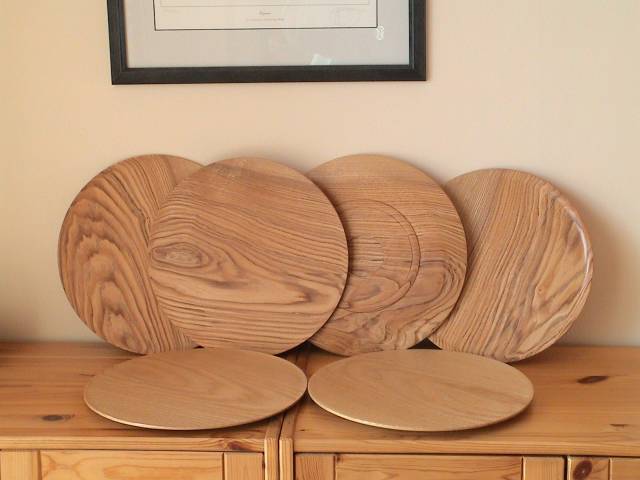lurker":7vbqdjmk said:
That was quick
However you assume I know what you are talking about :lol:
:lol: :lol:
the easiest way to make one on your lathe would be to use a sacraficial block of wood 11 3/4" diameter.
1.mount the bread board wood on a faceplate and turn it into the round
2.clean up the bottom of the board making it slightly concave you could turn a internal dovetail recess for your chuck but this is for food use and it will only get grubby and be arkward to clean, another alternative is to use an internal recess and turn a plug to fill it afterwards but ideally you dont want any other than a smooth bottom

3.turn the sides of your board parallel, sand and finish the bottom and sides now.
4.take your board of the faceplate
5. attach your saccraficial bit of wood to the faceplate and turn a reccess in it to accept the bread board, you are now making a jam chuck, it needs to be a tight fit, dont worry about having to tap it in with a mallet,
6. you can now turn the top the bread board, sand and finish it.
7. now you can either tap the edge of your jam chuck and hope it pops out they normally do :roll: or before you mount it on the faceplate drill some holes in the back of the jam chuck so that with a wooden dowel you can tap it out from behind.








